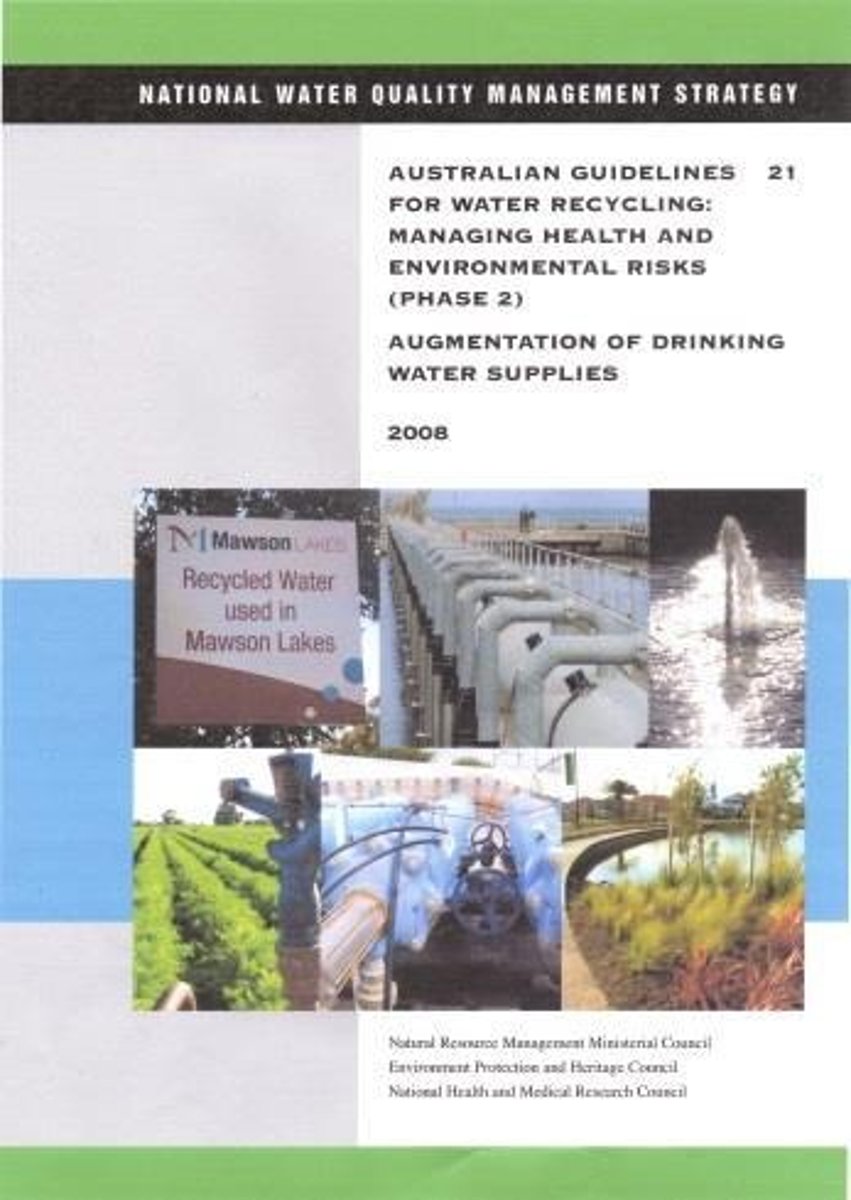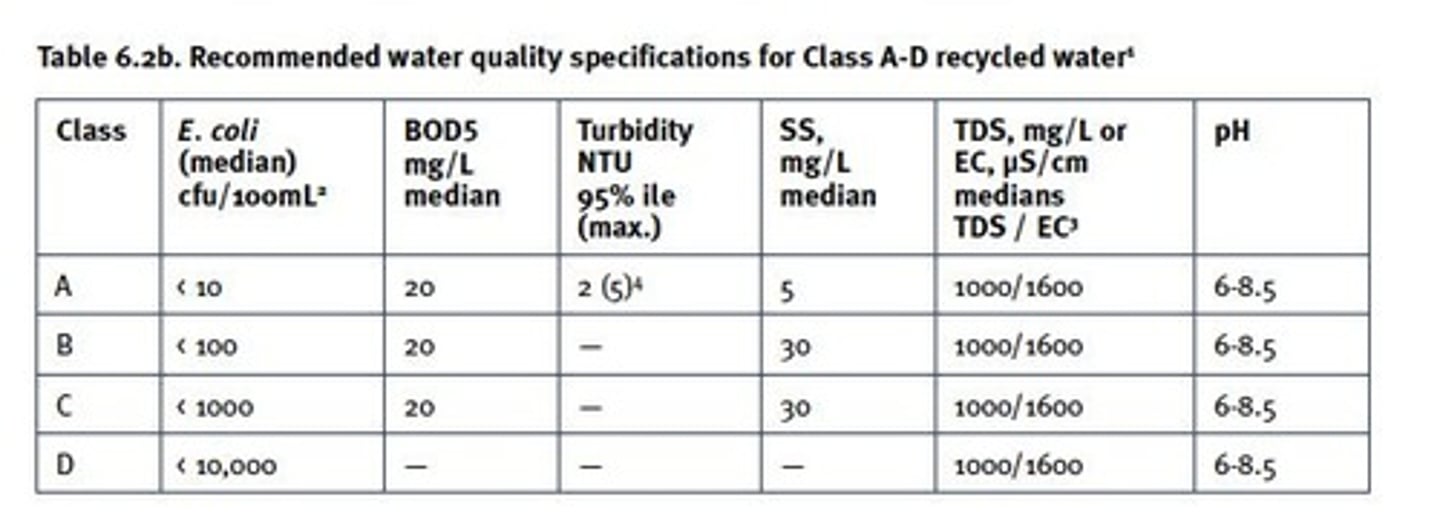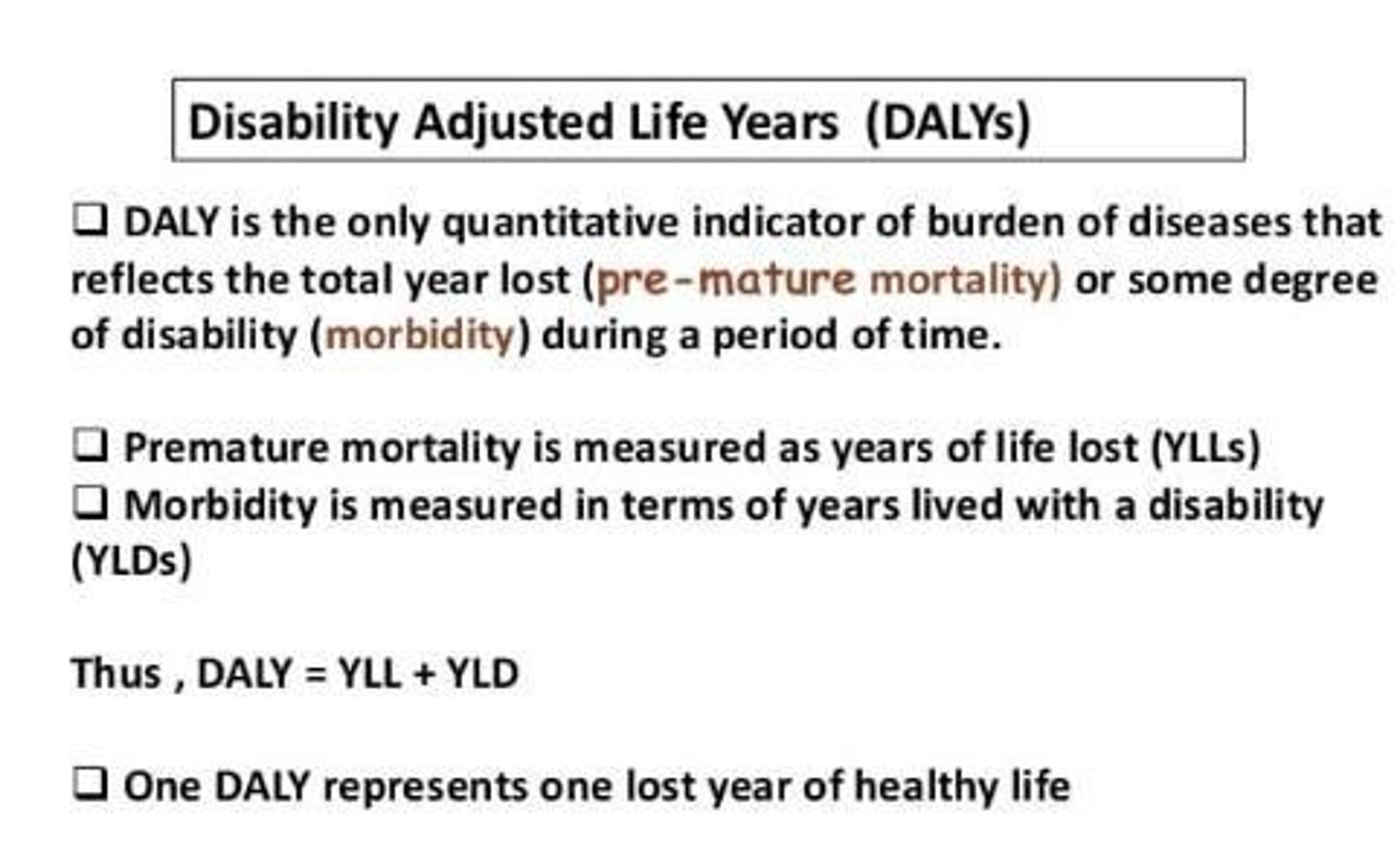Week 5 : Part 3 - Water Recycling and Microbial Water Quality in Applied Microbiology
1/24
There's no tags or description
Looks like no tags are added yet.
Name | Mastery | Learn | Test | Matching | Spaced |
|---|
No study sessions yet.
25 Terms
What are the main objectives of studying water recycling and wastewater microbiology?
To understand public health protection through water quality regulation, appreciate microbial water quality's role in recycled water management, and grasp basic principles of risk assessment and management.
What are some reasons for recycling water?
Drought, scarcity, security of supply, cost, and increase in population.
What types of water can be recycled?
Greywater, recycled/reclaimed water from sewage, industrial water, rainwater, and stormwater.
What are some uses of recycled water?
Drinking, augmenting drinking water supplies, dual reticulation for toilet flushing and gardening, irrigation for food crops, and wash down in construction.
What is dual reticulation in water recycling?
A system that uses separate pipes for recycled water, typically for non-potable uses like toilet flushing and garden watering.
What is the significance of the Australian Drinking Water Guidelines in water recycling?
They regulate unplanned potable water recycling, which is less conservative than guidelines for recycled water augmentation.

How is water quality measured in Queensland's water recycling guidelines?
Water quality is classified from Class A+ to Class D based on E. coli levels, which relate to the level of treatment and quality of water.

What are some examples of minimally processed food crops and their required water class?
Root crops like carrots require Class A water; pumpkins require Class B; crops like broccoli require Class A; and crops like avocados require Class C.
What are the main risks associated with recycled water?
Microbial hazards and chemicals, including concerns about long-term exposure to low levels of chemicals.
How is risk quantified in the context of water recycling?
Risk is calculated as exposure multiplied by effect, considering the likelihood of contact and the potential harm.
What is the cost relationship in pathogen reduction from water?
The cost of reducing pathogens increases exponentially as the concentration is reduced.
What microorganisms are of concern in raw sewage?
Bacteria (e.g., Salmonella, E. coli), viruses (e.g., Norovirus, Hepatitis A), protozoa (e.g., Cryptosporidium, Giardia), and helminths (e.g., Taenia, Ascaris).
What is the purpose of using reference pathogens in water recycling guidelines?
To specify microorganisms that represent a worst-case scenario for risk assessment based on occurrence, concentration, pathogenicity, removal in treatment, and survival.
What is the significance of health-based targets (HBT) in water recycling?
HBTs determine acceptable or tolerable risks, set health-based targets, and assess risks based on disability-adjusted life years (DALYs).
What does one DALY represent?
One DALY is equivalent to the loss of one healthy life year, accounting for the number of deaths and the age at which they occur.

What is the main focus of hazard identification in risk management for water recycling?
Identifying microbial hazards and chemicals that pose a risk to human health.
What is the role of preventative measures in water recycling?
To reduce human health risks through practices like irrigating at night, using signage, and selecting appropriate irrigation methods.
What is the relationship between treatment levels and human health risk in water recycling?
Higher levels of treatment (e.g., tertiary treatment) reduce human health risks compared to lower levels of treatment.
What are some examples of treatment processes in water recycling?
Microfiltration, reverse osmosis, bioreactors, and UV treatment.
What is the impact of microbial hazards on public health in water recycling?
Microbial hazards are the main focus for human health risks, necessitating effective monitoring and treatment.
What is the significance of monitoring and reviewing risks in water recycling?
To ensure that risk management measures are operating correctly and effectively reducing health risks.
What is the risk of being killed in a car accident compared to catching a treatable viral infection from recycled water?
The risk of being killed in a car accident is a thousand times more likely than catching a treatable viral infection from recycled water.
What are some examples of preventative measures in irrigation for recycled water?
Irrigating at night, using appropriate signage, and selecting the type of irrigation method.
What is the role of microbial water quality in the management of recycled water?
It is crucial for ensuring the safety and health standards of recycled water used for various applications.
What factors are considered in risk assessment for water recycling?
Exposure likelihood, potential harm, and the effectiveness of risk management measures.